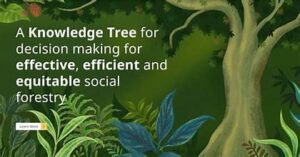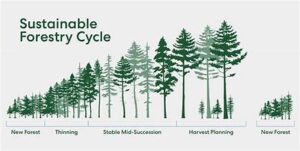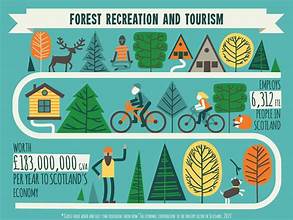
Community forestry is a collaborative approach to forest management that involves local communities in the stewardship of their natural resources. By empowering individuals and groups to actively participate in decision-making processes, community forestry fosters sustainable practices and yields a multitude of benefits. This article explores the environmental, economic, and social advantages of community forestry, shedding light on why it is a powerful tool for sustainable development.
Environmental Benefits of Community Forestry
1. Biodiversity Conservation
One of the most significant environmental benefits of community forestry is its role in conserving biodiversity. Community-managed forests are often better equipped to protect local flora and fauna due to the intimate knowledge that local communities have of their environment. These communities are more likely to implement practices that preserve wildlife habitats and prevent deforestation, leading to healthier ecosystems.
2. Improved Forest Health
Community forestry promotes sustainable management practices that enhance forest health. Local communities often use traditional knowledge and methods to manage their forests, such as selective logging, controlled burning, and natural regeneration. These practices help maintain the ecological balance, reduce the risk of forest fires, and combat pests and diseases more effectively than conventional forestry methods.
3. Climate Change Mitigation
Forests play a crucial role in mitigating climate change by acting as carbon sinks. Community forestry initiatives contribute to this effort by ensuring that forests are managed sustainably and not subjected to overexploitation. The preservation and restoration of forested areas help sequester carbon dioxide, thereby reducing greenhouse gas emissions and combating global warming.
Economic Benefits of Community Forestry
1. Sustainable Livelihoods
Community forestry can significantly boost local economies by providing sustainable livelihoods. Through activities such as eco-tourism, non-timber forest products (NTFPs), and sustainable logging, local communities can generate income while ensuring that forest resources are not depleted. This economic empowerment fosters greater financial stability and reduces reliance on external aid.
2. Job Creation
The management and conservation of community forests create job opportunities in various sectors, including forest management, tourism, and crafts. Jobs created through community forestry are often more stable and better suited to local needs compared to those generated by large-scale commercial operations. This contributes to overall economic development in rural areas.
3. Economic Resilience
Community forestry enhances economic resilience by diversifying income sources and reducing vulnerability to market fluctuations. By focusing on sustainable practices and local resources, communities can better withstand economic shocks and ensure long-term economic stability. This resilience is especially important in areas prone to environmental or economic challenges.
Social Benefits of Community Forestry
1. Empowerment and Ownership
Community forestry empowers local populations by giving them a stake in forest management and decision-making. This sense of ownership fosters a deeper commitment to conservation and sustainable practices. When communities have a direct role in managing their resources, they are more likely to invest in and protect those resources.
2. Strengthening Social Cohesion
Community forestry initiatives often involve collective action and collaboration, which can strengthen social bonds and improve community cohesion. By working together towards common goals, community members develop stronger relationships and a greater sense of unity. This social capital is crucial for the successful implementation of forestry projects and overall community well-being.
3. Cultural Preservation
Forests are integral to the cultural heritage of many indigenous and local communities. Community forestry helps preserve traditional practices and knowledge related to forest management, thereby safeguarding cultural identities. This cultural preservation is an important aspect of community forestry, ensuring that future generations maintain a connection to their ancestral traditions.
Conclusion
Community forestry is a multifaceted approach that offers a wealth of benefits across environmental, economic, and social domains. By involving local communities in the stewardship of forest resources, we unlock the potential for sustainable development and conservation. The environmental benefits include enhanced biodiversity conservation, improved forest health, and climate change mitigation. Economically, community forestry supports sustainable livelihoods, job creation, and economic resilience. Socially, it fosters empowerment, strengthens social cohesion, and preserves cultural heritage.


